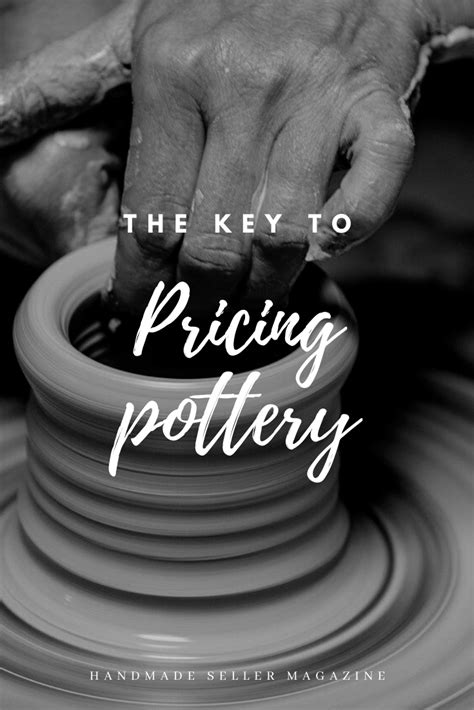How To Price Pottery
Ronan Farrow
Mar 25, 2025 · 3 min read

Table of Contents
How to Price Your Pottery: A Comprehensive Guide
Pricing your pottery can feel daunting, but with a strategic approach, you can ensure you're fairly compensated for your time, skill, and materials while remaining competitive. This guide breaks down the key factors to consider when pricing your handcrafted pieces.
Understanding Your Costs
Before setting prices, accurately calculate your costs. This includes both direct and indirect expenses.
Direct Costs: The Materials
- Clay: Record the cost per pound or kilogram of each type of clay you use. Consider shrinkage rates when calculating usage.
- Glazes: Note the cost per ounce or milliliter, accounting for wastage.
- Other Materials: This includes things like kiln fuel (electricity or gas), tools (replacement costs and depreciation), packaging, and labels. Don't forget smaller items like sponges and buckets.
Indirect Costs: The Overheads
These are the costs associated with running your pottery business, even if you don't sell anything.
- Studio Rent or Mortgage: If you have a dedicated studio space, include a portion of the rent or mortgage payment.
- Utilities: Electricity, water, and heating costs contribute significantly.
- Insurance: Protect your business with appropriate insurance.
- Marketing & Advertising: Factor in the cost of promoting your work.
Pricing Methods: Finding the Sweet Spot
Several methods help you arrive at a profitable price point. Experiment and see what works best for your business.
Cost-Plus Pricing: Covering Your Expenses
This is a simple method: add a markup percentage to your total cost (direct + indirect).
- Calculate total cost per piece: Add up all direct and indirect costs associated with producing one item. Consider dividing your indirect costs by the number of pieces you expect to create in a given period.
- Determine your desired profit margin: Decide on a percentage you want to earn on each piece. This depends on your experience, the complexity of the work, and market conditions. A common range is 50-100%, but you might need to adjust based on your market.
- Calculate selling price: Add the profit margin to your total cost. For example, if your total cost is $20 and your desired profit margin is 50%, your selling price would be $30.
Value-Based Pricing: Reflecting Your Skill and Uniqueness
This method focuses on the perceived value of your pottery. It's suitable for high-end, unique pieces.
- Assess your skill and experience: Consider your years of practice, design innovation, and artistic style.
- Research competitor pricing: Look at similar items sold by other potters with comparable skills and experience.
- Highlight your unique selling proposition (USP): What makes your pottery stand out? Is it the intricate designs, the specific glazes, or a particular firing technique?
Competitive Pricing: Staying in the Market
This method involves researching prices of similar pottery by competitors in your area or online.
- Market Research: Observe prices on Etsy, at craft fairs, in galleries, or in local shops. Look for pieces comparable in size, material, and complexity.
- Price Positioning: Decide if you want to be a budget-friendly option, a mid-range seller, or a luxury brand. This will influence your pricing strategy.
- Adapt and Adjust: Regularly review competitor prices and adjust your own as needed to maintain competitiveness.
Refining Your Pricing Strategy
Once you've established a starting price, consider these factors:
- Piece Size and Complexity: Larger and more intricate pieces should command higher prices.
- Materials Used: Premium clays and glazes justify higher prices.
- Wholesale vs. Retail: Offer discounted prices for bulk orders or wholesale clients.
- Seasonal Adjustments: Adjust prices slightly during peak seasons (holidays, etc.)
Remember: Pricing is an iterative process. Track your sales and adjust your prices as needed to optimize your profitability while ensuring your pottery remains attractive to buyers. Regularly reassess your costs and adjust accordingly. Don't undervalue your hard work and artistic talent!
Featured Posts
Also read the following articles
| Article Title | Date |
|---|---|
| How To Make Wood Pellets Without A Mill | Mar 25, 2025 |
| How To Jack Up A Boat Trailer | Mar 25, 2025 |
| How To Play Cypress Point | Mar 25, 2025 |
| How To Paint Gun Slide | Mar 25, 2025 |
| How To Remove Concrete Anchors From Wall | Mar 25, 2025 |
Latest Posts
Thank you for visiting our website which covers about How To Price Pottery . We hope the information provided has been useful to you. Feel free to contact us if you have any questions or need further assistance. See you next time and don't miss to bookmark.
